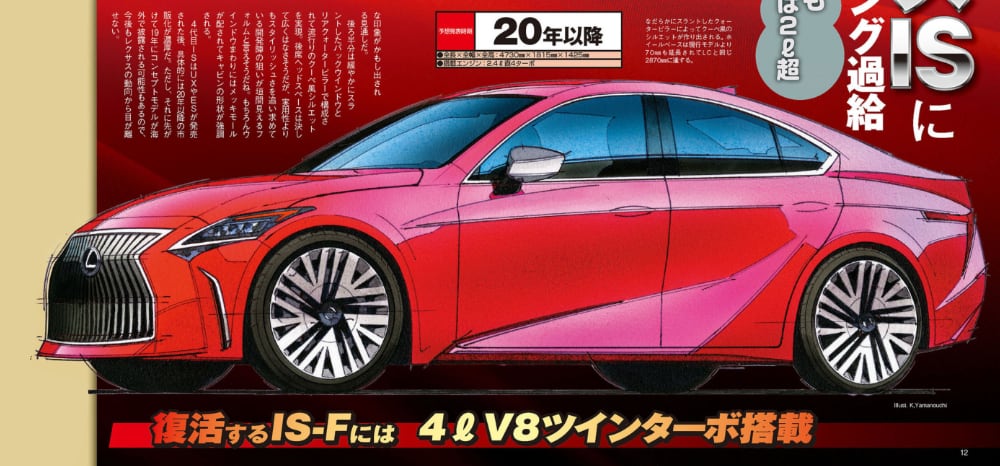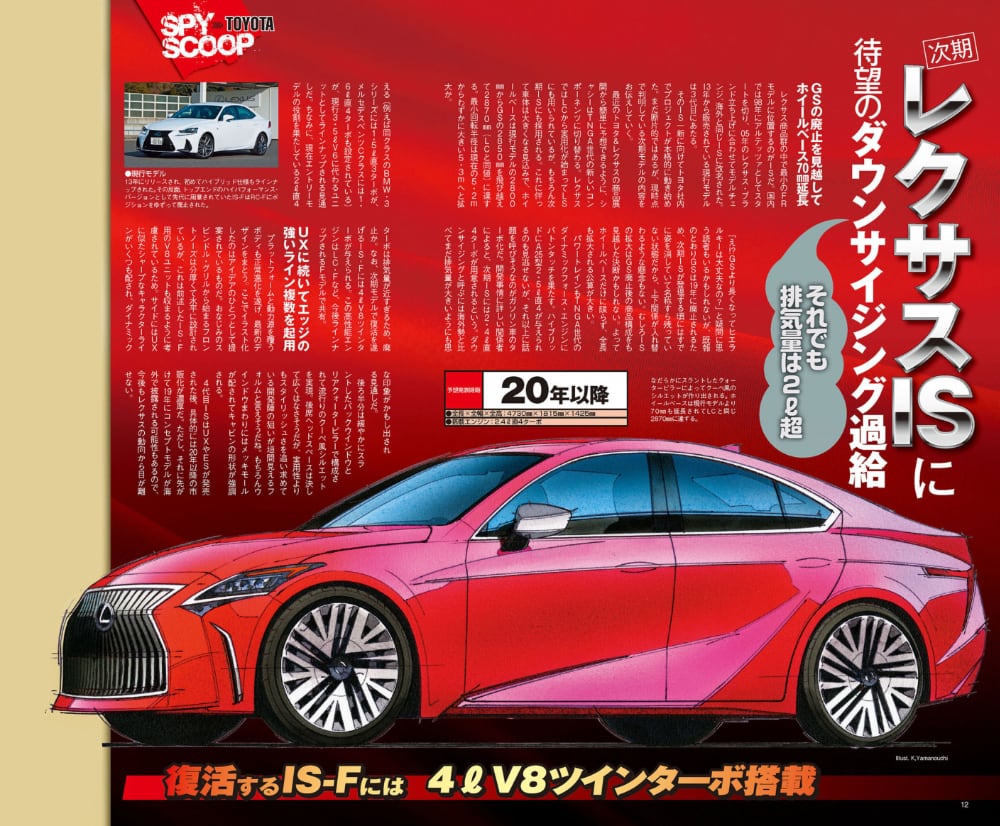According to Japanese magazine Mag-X, the next-generation Lexus IS will debut in 2020 as a much larger sedan, with dimensions closer to the GS than the current IS model.
Using the numbers from the article, let’s make a comparison table with the IS old & new, the GS sedan, and the LC coupe for good measure:
| Model | Wheelbase | Length | Width | Height |
| New IS | 2870 mm (113 in) | 4730 mm (186.2 in) | 1815 mm (71.5 in) | 1425 mm (56.1 in) |
| Current IS | 2,800 mm (110.2 in) | 4,681 mm (184.3 in) | 1,810 mm (71.3 in) | 1,430 mm (56.3 in) |
| Current GS | 2,850 mm (112.2 in) | 4,879 mm (192.1 in) | 1,840 mm (72.4 in) | 1,455 mm (57.3 in) |
| Current LC | 2,870 mm (113.0 in) | 4,760 mm (187.4 in) | 1,920 mm (75.6 in) | 1,345 mm (53.0 in) |
If the Mag-X dimensions are correct, the next-gen IS could have a longer wheelbase and shorter overall length than the GS sedan. This discrepancy could mean shorter front & rear overhangs due to the adoption of the GA-L platform from the LC & LS.
The article suggests a new 2.4L four-cylinder turbo and a 2.5L hybrid as engine options, but there’s no mention of the 400+ horsepower IS 450 that was rumored a couple weeks back. Mag-X also throws in an IS F with the same 4.0L twin-turbo V8 that’s supposed to power the LC F coupe.
Here’s the full page from Mag-X, if anyone wants to translate the article in the comments:



Comments